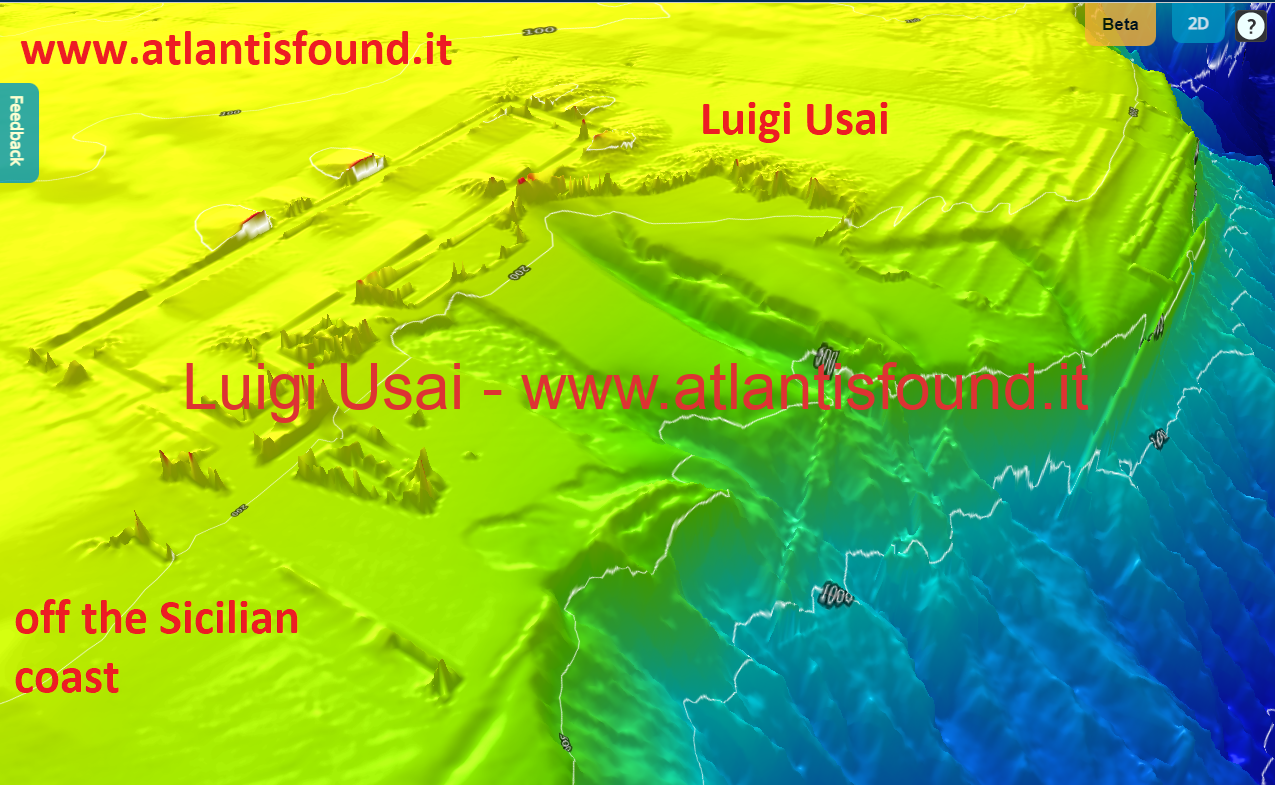Scientific proof of the existence of the legendary Isle of Atlantis: nuragic means atlantean
The Superintendencies and at least one Minister of the Italian Government have never replied to my pecs (certified e-mail with equivalent value to Registered Mail with Return Receipt) where I reported the discovery within 24 hours as per current legislation on the procurement of Archaeological or Cultural Heritage. They must have thought it was a joke . Therefore:
1) I warn them publicly before the whole world;
2) based on current legislation, I have a legal and moral duty to protect and safeguard the findings made : I made the news public to prevent the discovery and the findings from being ruined in recent years (damaged, sabotaged, stolen, illegally exported, destroyed by incompetent people such as inexperienced construction personnel carrying out field maneuvers etc.) due to State mismanagement of finds. In fact, by law I would have the obligation of silence, to be entitled to the economic percentage on the discovery. But in this case, my conscience requires me to make the news public because in my opinion it isthe State leaders who should protect the discovery and the findings (cultural heritage, treasures, works of art, artifacts, ports, villages, etc.), are currently putting it in danger, because they don’t even believe me .
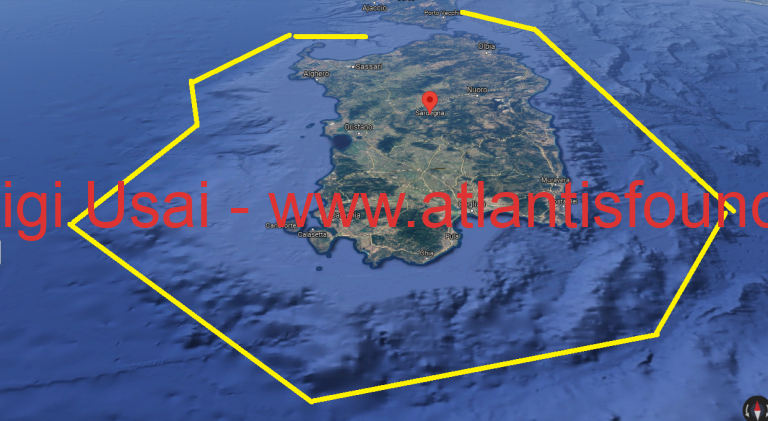
Atlantis is the name given by the Egyptians to the semi-submerged Sardinian-Corsican geological block when it was dry land, before its submersion/sinking around 9600 BC . It is effectively semi-submerged, as the Platonic historical account of Atlantis narrates, but two plateaus have remained out of the water, and our civilization has given them the name of “Sardinia” and “Corsica” . There was the “elephant species”, as Plato says, in fact there was the Mammuthus Lamarmorae. It has a north-south orientation, as stated by Plato. The northern part is full of excellent winds for navigation, and in fact between Corsica and Sardinia there is one of the best sailing schools in Europe. The euhemeristic vision was correct: Poseidon was a very ancient ruler of the Sardinian-Corsican island when it was still dry land, then deified. In the Sardinian-Corsican block the toponymy, very useful to archaeologists, clearly recalls the sources of hot and cold water placed according to the Platonic story on the Island of Atlantis by Poseidon: there are fractions of villages called “Acquacadda” (hot water , in Sardinian Campidanese ), S’acqua callenti de basciu (The hot water below, in Sardinian Campidanese) and S’Acqua Callenti de Susu(The hot water above, Campidanese in Sardinian dialect), while in the nearby town of Siliqua there is still today the cold water source of Zinnigas; in Siliqua the “ Castello d’Acquafredda ” is all that remains of the medieval citadel of Acquafredda . In short, even toponymy recalls the Platonic myth. Furthermore, Solon heard the story in the Egyptian city of Sais , and Sais is also the name of a geographical fraction near Narcao: localities of lower Is Sais and upper Is Sais of Narcao (SU), in Sulcis in present-day Sardinia; it is also a Sardinian surname. The toponymy reappears in an apparently correct way, and precisely in the same geographical points (Sulcis, in present-day Sardinia) where the toponymy recalls the sources placed by Poseidon. And curiously, still in Sulcis, there is a locality called Piscinas … another toponymy that recalls the theme of water or flooding. While in relation to Egyptian toponymy, we find a locality called ” Terresoli ” (Land of the Sun, in Campidanese Sardinian dialect) which closely reminds us of Heliopolis (City of the Sun). As the Sulcis “s’esti furriau”, they called a fraction ” Furriadroxiu “; as many people died or were seriously injured, they called it “ Spistiddatroxiu“. We have seen the surname Sais , but the surname Usai is also interesting: the Usai mummy exists in Bologna , which demonstrates the contacts between the Sardinian-Corsican-Atlantean population and ancient Egypt. In fact, Usai is an exclusively Sardinian-Corsican-Atlantean surname: all over the world, anyone called Usai is of Sardinian-Corsican-Atlantean origins . So we have the presence of Sardinian-Corsican surnames in Ancient Egypt, and this should make us reflect. Furthermore, an engraving of an Egyptian boat was found in the Necropolis of Montessu in Santadi , in Sulcis. This further confirms the relations between Egypt and Sulcis of the Sardinian-Corsican-Atlantean geological block .Uras is a Sardinian surname and a Sardinian city . Together with the Mummia Usai, in Bologna, there are rooms with small bronzes, and the Nuragic small bronzes are known to all Sardinians . Toponymy and Onomastics, therefore, confirm the Platonic myth and also the relations with the Egyptians. The Egyptian finds are also found in other places in Sardinia, but here, for the moment, we will remain focused on the Atlantean theme.
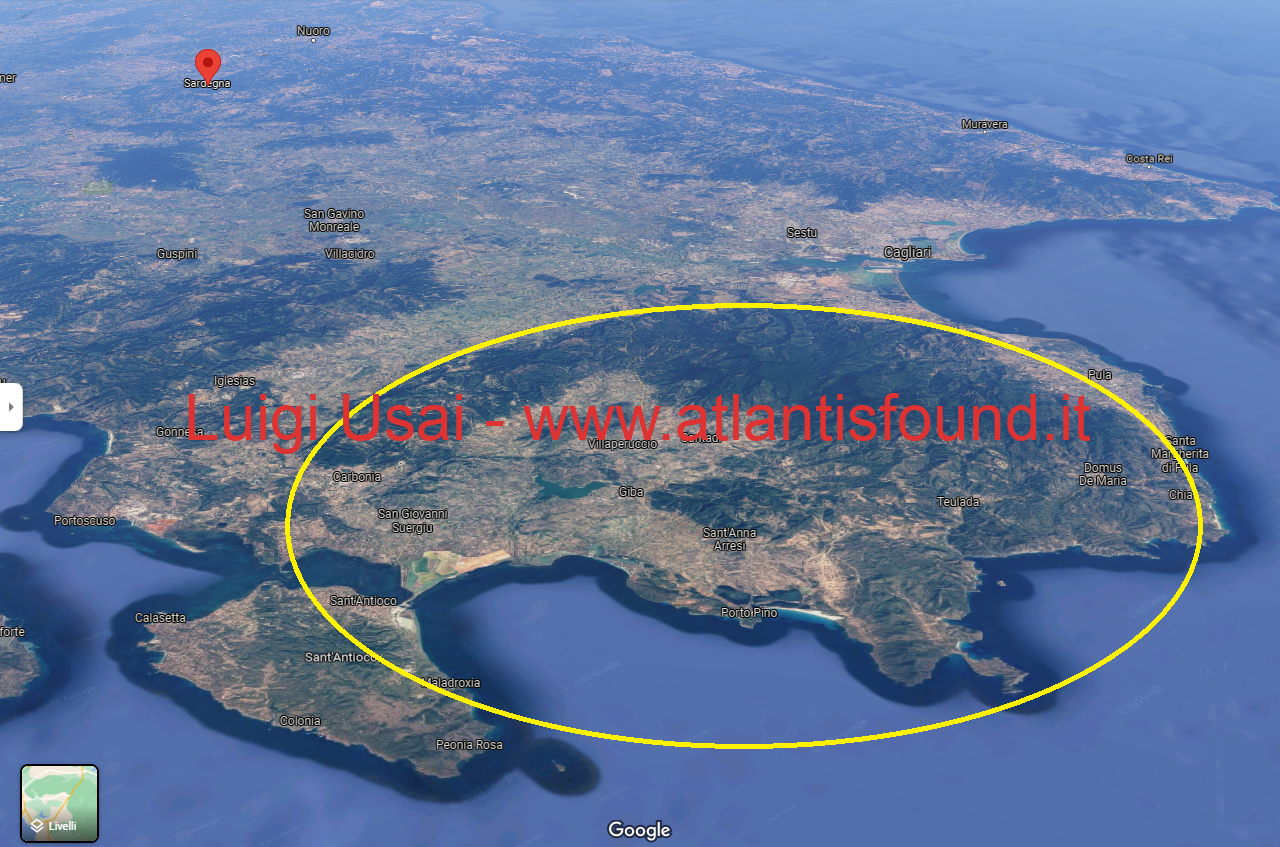
It is difficult to explain in a few words, I will do it in another context: the Sumerians, the Akkadians and the Babylonians , with very high probability, were Sardinian-Corsican-Atlantean migrations in times that scientists will now have to recalculate on the basis of the new discoveries. It will be difficult and wonderful, having to go over all the texts all over again and try to figure it out. However, I can give you some insights: there are probably links between the Sardinian surname Cadelanu , Candelanu and Kandalanu, a Neo-Babylonian king ; between the village of Sarroch in Sardinia and Dur- Sharrukinof Nineveh; these discoveries open the door to a new type of approach with the Sumerian and Mesopotamian culture in general.
Atlantis was bigger than Libya and Asia put together: now, by inverse procedure, we can deduce the size of these two geographical realities in about 9600 BC. The people who advanced boldly and wanted to conquer all the peoples who lived beyond the Pillars of Hercules, therefore, were the Sardinian Corso Atlanteans who inhabited the Sardinian-Corsican geological block when it was still dry land, before the sinking in about 9600 BC . The whole of Sulcis (Sulcis is a geographical area of lower Sardinia, west of Cagliari) is very rich in Atlantean toponymy: Acquacadda ,Acquafredda (city disappeared in the Middle Ages), Acquafredda Castle , S’acqua callenti de susu, S’acqua callenti de baxiu, Acqua Callentis (another fraction meaning Hot Water ), over three thousand and two hundred Sardinian toponyms just by looking for the portion of the word ” funt” (“funti” or “fonti” means “source” in at least one of the Sardinian variants). It is possible to cross-check my statements with Google Maps and with the Sardinian database of regional toponyms.
In fact, Plato narrates that the island of Atlantis was rich in water. And in fact the world famous Sardinian linguist Salvatore Dedola (a super genius that you absolutely have to study in depth, together with Bartolomeo Porcheddu, another extraordinary scholar ) shows that Sassari, Thatari (Sardinian name of Sassari) and Serramanna, to give just one example, mean “Rich in Waters”. Toponymy and onomastics confirm the Platonic myth, but now it would be appropriate to start new sectoral studies, carried out by specialists: unfortunately I am not a specialist in the sector, this is the best I could do, unfortunately.
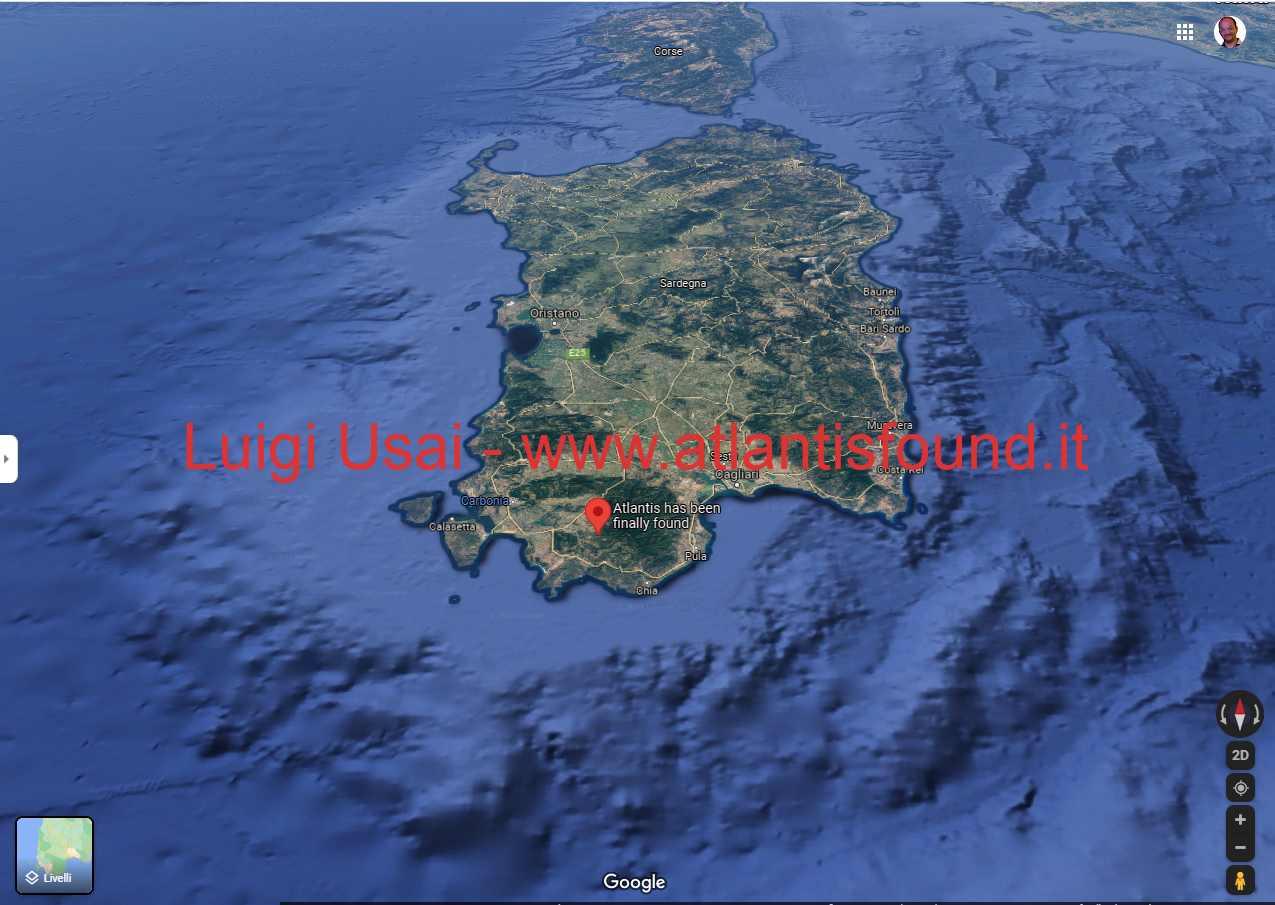
When Plato speaks of the measurement of 10,000 stadia relating to the plain of Atlantis, this calculation too is correct: in fact, if one excludes “the band of mountains that fall directly into the sea” (i.e. the mountains now present in Corsica and the right side of Sardinia such as Gennargentu), measuring the perimeter of the remaining territory currently semi-submerged and is rectangular in shape, is slightly greater than 10,000 stadiums (note that there are at least 2 types of Greek stadiums, including the Attic stadium; but archaeologists understood me well and they can do the cross-checks following the scientific method).Summarizing for clarity: the priests of the city of Sais in Egypt were trying, in their own way, to explain to Solon a geological event of submersion of the Sardinian-Corsican geological block in the center of the Mediterranean, a sea which in 9600 BC was called the Atlantic Ocean or Sea Atlantic (it took its name from Atlantis), asserting that in the Sardinian-Corsican block there lived a lineage that had conquered as far as Libya and Egypt, and then as far as Tyrrenia etc. In this case the period of the sinking would be approximately around 9600 BC, unlike the hypothesis of the Sardinian Nuragic Atlantis, which is clearly incorrect for the reasons listed elsewhere by Sardinian archaeologists. Stratigraphic analyzes must descend into the ground to find the remains of about 11,600 years ago, in order to find the remains of the “capital” of Atlantis or its population, and it is also very clear why there are no bodies of the deceased Atlanteans in the Nuragic layers. I am clearly willing to expand on my statements for your clarity and better scientific analysis. One could continue by listing all the points congruent with the Platonic affirmations. Also: Frau (whom I sincerely thank), places the Pillars of Hercules, if I’m not mistaken, between Sicily and Tunisia. Indeed, there is a possibility that these have been found. In fact, the scientific community around the world is in the process of analyzing the very recent discovery of what appear to be structures of an anthropic nature located right in the Strait of Sicily, in many places, but exemplary can be considered the remains, perfectly parallel, with geometries perfect and right angles, found through bathymetric analysis of the Emodnet System of the European Union , in Birsa Bank and El Haouaria Bank , exactly between Sicily and Tunisia, and a short distance from Pantelleria. A second anomalous finding from a bathymetric point of view was made, of a structure with an apparent rectangular shape in the Sicily-Malta continental carbonate platform, flanked by the Sicily-Malta Escarpment (Sicily-Malta Escarpment for geologists). Currently, the scientific world has not yet formalized whether these are actual scientific discoveries: from the bathymetries of at least 5 world bathymetric systems, they appear as such. Official confirmation is awaited, but in the meantime you can check these news online, which however have, fortunately, already been around the world. Regarding the Gadirica area, it is possible that it was not the name of Gadir (Cádiz), but of a homonymous geographical area of the Sardinian-Corsican block, now submerged. Why would it have the same name as Gadir? For the same reason that Teulada in Sardinia has the equivalent Teulada in Spain; Pula has a Pula in Dalmatia; Aritzo in Sardinia corresponds to Aritzu in Spain; Monastir in Sardinia corresponds to Monastir in Tunisia, Pompu in Sardinia corresponds to Pompeii, Bari corresponds to Bari Sardo, and I could go on and on, but I risk boring you. For this reason, Gadir in the Sardinian-Corsican geological block would correspond to Gadir (ie Cadiz). I have not yet had the opportunity to verify this statement about these toponyms with specialists, but you will certainly be more capable than me in counter-verifying, thanks in advance.Why then was all around the submerged Corsican Sardinian island full of mud that prevented navigation ? Because the sea currents, after the sinking of the Corsican Sardinian geological block, began to tear away layers of soil that emerged from the surface as Sardinia does now, creating over the millennia what geologists today call the Sardinian “continental platform”. run . As the sea currents “washed” away layers of soil, destroying all the inhabited centers and structures that had been built before 9600 BC on the Sardinian-Corsican coastal strips, the water was clouded by muddy materials, and this is clear and obvious to thought and reflection.In Atlantis “there lived the oldest ones”, and we all know of the Corsican Sardinian centenarians , to the point that the Sardinian genetic code has not only been and is studied all over the world, but has even been stolen (see the theft of 25,000 test tubes with 17 suspects, following the theft of the DNA test tubes of the Sardinians which according to the press took place at the Genos Park of Perdasdefogu in August 2016). That the Sardinian-Corsican block is ancient for the ancients is obvious to educated scholars: just mention the discovery of a fragment of carapace of Arthropleura armata of the Carboniferous of Iglesias (PAS Museum – EA Martel of Carbonia) , but anyone interested can inquire at a paleontologist, above all the extraordinary Daniel Zoboli.It is therefore obvious that the learned Egyptians were able, from many details, to understand the antiquity of the Sardinian-Corsican block , which they called Atlantis . Plato affirms that from the Isle of Atlantis (which here proves to be the Corsican Sardinian block) it was possible to go to the surrounding islands and to what is truly the continent. But we Sardinians on a linguistic level, fortunately, have still kept these ways of saying: ” Deppu andai in Continenti ” ( I have to go to the Continent), when we have to go to the Boot. This statement makes those who hear us Sardinians die laughing, but fortunately it helps us understand what Plato meant: linguistically, when the Sardinian-Corsican block was dry land, we Sardinians linguistically called the island “continent”. Leaving the island was “going to the continent, to another continent”. After the sinking, this linguistic use remained at the level of Sardinian dialects, so we say that “we are going to the continent”, astounding those who listen to us.
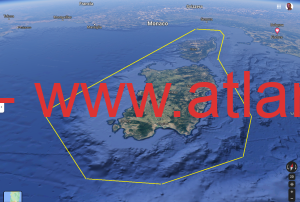
In short, all Platonic statements, if placed in the right context, are rational and explainable correctly. However, they require a certain mental humility, a certain “willingness to listen”. Since they are strong affirmations, which have consequences, they probably need a few months of reflection and meditation before they can be properly assimilated and digested. Incidentally, it’s been 2600 years (from the time of Solon) that no one understood what the island of Atlantis was, indeed, it was stated almost everywhere that Plato was exaggerating. With regards to the submersion/sinking of the Corsican Atlantean Sardinian island , this would be a geological problem, where I can only speculate. For example, there may be at least three concurrent causes: Meltwater Pulses, in particular the meltwater pulse 1b, also studied by NASA technicians. In addition, geological settlement movements due to what geological experts call ” slab roll-back “. Furthermore, it has even been hypothesized, but still being verified, that a tectonic fault passes under the Sulcis, the same one that passes under Pompeii and Herculaneum, arrives under the Sulcis and continues up to Gibraltar . In possible support of the thesis that Atlantis is the Sardinian-Corsican island partially submerged and its continental shelf currently submerged, we report here some scientific evidence. On February 28, 2017, a study was published in the journal Scientific Reports of the Nature group which presents new archaeogenetic data. These data reinforce the archaeological evidence of the clear cultural discontinuity between the first inhabitants of the island, dating back to about 11,000 years ago, and the architects of its definitive population which occurred about 3,000 years later, with the arrival of the first farmers-breeders. . This important discovery is based on the analysis of DNA extracted from the skeletal remains of two individuals buried in the prehistoric shelter of Su Carroppu di Sirri in Carbonia . At present, these remains represent the oldest evidence of human presence on the island. Now, from 9600 BC to today about 9600 + 2023 years have passed, i.e. 11623. The evidence cited above is precisely from 11000 years ago. A study was conducted on the clear cultural discontinuity between the first visitors to the island of Sardinia around 11,000 years ago and the architects of its stable and definitive population, which took place around 3,000 years later with the arrival of the first farmers-breeders. The study is based on the analysis of DNA extracted from the skeletal remains of two individuals buried in the prehistoric shelter of Su Carroppu di Sirri in Carbonia, which represent the oldest direct evidence of human presence on the island. The study is part of the research project funded by the Autonomous Region of Sardinia on the history of the first Neolithic population of the island. The genetic sequences obtained were compared with ancient and modern data and revealed a large difference in the genetic variability of the current population of the island compared to the first humans who frequented it, with most of the genetic variability appearing to have been determined by the migratory flow of populations who introduced the productive economy starting from the most ancient Neolithic. The Mesolithic sequences of the Su Carroppu samples belong to the groups named J2b1 and I3, which have very low or low frequencies in Europe. The relevance of the scientific discovery stimulated the intensification of research in the key site of Su Carroppu, already investigated between the years 1960-1970 and currently the subject of systematic excavations directed by the University of Cagliari. Happy searching to all of you. If anyone is interested, the theory of Atlantis as the Sardinian-Corsican island and all of its continental shelf currently submerged, can also explain other things in a very intuitive way. For example, the Greeks and Romans probably thought that the submersion of the Corsican Sardinian geological block had been a punishment from the gods for the arrogant inhabitants, who “overbearingly attempted, in one fell swoop, to invade the lands on this side of the Colonne D’ Hercules (perhaps located in the current Birsa Bank, an apparently anthropized seamount below the Strait of Sicily, data scientifically verified through Emodnet bathymetries). First I tried to clarify the toponymy. Now we can try to clarify the onomastics: the Gods punished the Sardinian-Corsicans, called by the Egyptians “Atlanteans”, according to what was stated in the Platonic texts around 9600 BC, “crushing the Sardinian-Corsican island underfoot, and it sank” (the quotation mark is my hypothesis). And this is easily explained why the Greeks called Sardinia Ichnusa (footprint) and the Romans called it Sandalia (sandal imprint). Even the name is now very clear: they were Greeks and Romans who mocked Sardinia, which was what remained of the great Sardinian-Corsican power, which the Egyptians called “Atlantis” in the story given to Solon, who told it to Dropides, who spoke of it to grandpa Critias, who told him to grandson Critias, who told Socrates in the Platonic dialogues of Timaeus and Critias. If any reader wants to know the original history of the Corsican Sardinian geological block, before it sank around 9600 BC, he is obliged to read Timaeus and Critias, two texts written by the Greek Plato. All the rest of the texts published to date have done nothing but add entropy, chaos, confusion to the history of the Sardinian-Corsican block, as characters like Cayce or Madame Blavatsky, professional charlatans, used the Atlantis argument to money, publishing books full of lies and entertaining the curious, especially after they saw that Ignatius Donnelly’s book, entitled ATLANTIS: THE ANTEDILUVIAN WORLD, had had an incredible worldwide media coverage. Furthermore, cinema and television have introduced a lot of nonsense on the subject of Atlantis, so when we talk about this topic many have in mind pieces of films or cartoons or fantasy books that have nothing to do with it. what Plato said. Hence: the Greek name Ichnusa, and Latin Sandalia, confirm my hypothesis that the ancients thought that the gods punished the Sardinian-Corsican island by crushing it underfoot. There was still no geological science as we understand it today. Furthermore:the Wadati-Benioff tectonic fault that passes under Pompeii and Herculaneum, and which destroyed them, is probably the same that continues as far as the Sulcis in present-day Sardinia and continues until it reaches the current Strait of Gibraltar. Since this fault is activated in geological times, the citizens who live in the Sulcis are not aware of the seismic activity. When this releases its elastic energy, frightening disasters occur, such as the opening of the Strait of Gibraltar, the destruction of cities and places such as Pompeii and Herculaneum, or the submersion of the Sardo-Corsa island. But the submersion is probably also due to another very important cause: the geological settlement of the Sardinian-Corsican island following the “slab roll-back” which, as revealed to us by the ancient Egyptian priest, took place around 9600 BC. The Slab Roll-Back, concomitantly with the tectonic awakening of the fault present under the Sulcis and currently unknown to the official geology which instead knows a fault further south along Africa, and perhaps also due to the succession of various Meltwater Pulses after the Wurm glaciation, they caused the partial submersion of the Sardo Corsa island. Now,out of the water, only the tops of the mountains remained, which we now believe are separate islands, and which our civilization now knows by the names of Sardinia and Corsica. Furthermore, all the toponymy and onomastics present in Sulcis leave one question: why do all these Sulcis places recall Plato’s story? We will then be able to pick up the Platonic text again to try to understand why. First of all, if the Pillars of Hercules were located at Birsa Bank, and the Sardinian-Corsican island and its currently submerged continental shelf is really Atlantis, this means that in 9600 BC it was customary to call the current Mediterranean Sea with the name of Sea Atlantic (i.e. sea of the island of Atlantis) or Atlantic Ocean (Ocean of the currently submerged Sardinian-Corsican island, i.e. Atlantis). I haven’t read Frau (2002) yet, so I don’t know if he has already published some of my statements, in which case I apologize in advance. Mine are only reflections resulting from the reasoning made in the last two years. Please let me know of any shortcomings or apparent plagiarism, thanks in advance. If all of this is true, then Poseidon was perhaps a man, and obviously not a deity (why, have you ever met one in person?), and this man fell in love with a teenage girl whose parents had died, Clito. The Platonic account states that Poseidon surrounded the hill with water channels. Now, just the Sulcis (but look what a coincidence! Or maybe it’s not a coincidence?) is volcanic in nature, so right in the center of the Sulcis there is a hill or mountain, if you like, not too high, and this is visible using satellite systems such as Google Maps or Google Earth, which even allows you to tilt the view by pressing the shift key on the computer keyboard. But are these places really ancient as Plato says or are they very recent places? Easy to verify: right in the center of Sulcis, you can verify that there are prehistoric IS ZUDDAS caves, and nearby there is ACQUACADDA (Poseidon put two sources there, one of cold water and one of hot water, and the locality is called Acquacadda …but look what an incredible coincidence!Of course I have imagination!) and very ancient archaeological finds have been found in the locality of Acquacadda. Now an expert might argue that the finds, for example, are only 6,000 years old. Note: an expert should look for the stratigraphic layers of 9600 BC: only then would it be possible to obtain more detailed information. Instead, currently, in these places groups of children are brought to watch. In my opinion this is dangerous but I’m not a stratigraphy specialist so I have no say in the matter. Also in Sulcis, the Su Benatzu cave was found, which is an authentic archaeological treasure, which could contribute to research on the topic “what happened in the millennia after the sinking of the Sardinian-Corso-Atlantean island?” (I have to develop this topic). Furthermore, in support of the theory of the submerged Sardinian-Corsa Atlantis, there is another scientific discovery of marine archeology: the discovery of a load of 39 ingots of orichalcum by the extraordinary Sebastiano Tusa off the coast of Gela, in Sicily. Newspaper articles speculate that they came from Greece or Asia Minor, but now that we have all this information about the submerged Sardinian-Corsican island, we can assume that they came from this now submerged island, which is located a very short distance away, which makes the hypothesis very plausible. The antiquity of the semi-submerged Sardinian Corsican geological block is known to official science, and in particular also to geology, which is aware of the so-called “rotation of the Sardinian-Corsican block” which began about 40 million years ago, after the detachment of the from the present coast of Spain and France, and lasted about 15 million years (take the dates with a grain of salt, I wouldn’t be surprised if they turn out to be incorrect in the future). This is possible to know, as stated by the well-known geologist Mario Tozzi, because a great deal of research has been done in the paleomagnetic field, which showed how the only way to explain the geomagnetic orientation of the Sardinian-Corsican stone and geological structures is to bring it back to coincide with the current Hispanic-French coasts. Furthermore, the fact that the geological structure of Sardinia has various types of Graben Horst may have also contributed to the possible submersion, so that these geological adjustments may also have contributed to important and significant telluric displacements for the Sardinian-Corso-Atlanteans people who lived there. For example, the Campidano plain in Sardinia is a Graben Horst. The antiquity of the Sardinian-Corsican geological block is clear to geologists from all over the world as there are even “graptolites”, to which the Sapiens program by the extraordinary geologist Mario Tozzi has dedicated videos (see: “Goni’s Graptolites at Sapiens”). Now, if Atlantis is really the submerged Sardinian-Corsican block, then we have to verify again what Plato said. Atlantis dominated the Mediterranean also over Libya and Tyrrhenia, and over many islands scattered on the Ocean (let us remember that we have already shown that Oceanus, in the texts of 9600 BC cited by the Egyptians, is the Mediterranean Sea, and not the current Atlantic Ocean ). But if it is true that it dominated, then perhaps there were linguistic influences as well? Of course, and the evidence already exists: many scholars have noticed the incredible similarities between Sardinian dialects and languages and the Corsican language, Sicilian “dialect” (or should we say the language?) (Minimum Dictionary. Sardinian Corso Siciliano. Correspondenze nel Gallurese, by Emilio Aresu and others),mainstream as no one imagined the enormous importance of this type of work, which shows to all intents and purposes that the Sardinian-Corsican-Atlantean languages have spread throughout the Mediterranean. And now, thinking about it, we can begin to understand that even in the study of languages there has been an inversion: it was believed that Sardinian resembles Spanish and Portuguese because we have been “dominated” by them in recent history, while probably the Spanish and Portuguese languages, in reverse, were imposed by the prehistoric Sardinian-Corsican-Atlantean dominion of which, until now, we were not aware. New Sardinia has dedicated an article about it entitled: «That thread that binds Sardinians to Basques» by Paolo Curreli in which an exceptional and ingenious linguist became aware of this Sardinian Corsican Atlantean linguistic heritage, and made it known to the world with his extraordinary works (from the article: “Hundreds of similar words in the study of Elexpuru Arregi. Many linguistic affinities . Two towns with the same names: Aritzo and Aritzu. But also Uri and Aristanus. The holly in Sardinian, galostiu, in Basque is gorostoi”). But Atlantidologists cannot arrive at these texts if no one shows their correlation with the theme of Atlantis. There is therefore still a lot of work to do, and this is just the beginning of a new era of studies. The peoples of the Corsican Sardinian block therefore influenced in prehistoric times the evolution of the current languages and dialects and minority languages of part of the Mediterranean and perhaps also of other places. Here is now explained in a very simple and crystalline way why the Sardinian, the Corsican, the Sicilian, the Basque, the Spanish, the Portuguese, the Veronese dialect (see for example all the names of asparagus, vegetables, etc. which are identical to those Sardinians) and who knows which others are so similar. Now that we have this information, we can resume the overtime work of theProfessor Bartolomeo Porcheddu and confront your statements, which are now all perfectly correct and all not only explainable, but even understandable and obvious to reason. What Professor Bartolomeo Porcheddu says is right and correct (in my eyes it is obvious, there is not even need to underline it, but in the interviews we sometimes get the impression that your theses are considered “fringe theories”, as if they were pseudo -science, while instead they are a demonstration of genius and intuition out of the ordinary). There are various sites that show how by now various scholars were already realizing the linguistic similarities between languages and dialects of the Sardinian-Corsican geological block and other languages and dialects scattered around the Mediterranean in particular, see also this article. Yet another article that talks about it is this one. In short, by now serious scholars were realizing that there was information we were not aware of, as if there really was an ancient civilization that was missing from the appeal of Ancient History, as Graham Hancock states: this civilization is the one that lived in the Corsican geological block currently semi-submerged, when this was an island and dry land: Graham Hancock was therefore right on this point. The impact of this extraordinary discovery creates a sort of shock in the scholar’s mind: in fact, now there is a sense of dephasing, of distrust. How is it possible that hardly anyone had ever noticed, if we exclude some brilliant scholars who have even been laughed at for their statements? How is it possible that Plato was not believed? Even Aristotle himself did not believe him: “The one who invented Atlantis also made it disappear”. In conclusion: the old Egyptian priest was telling Solon, around 590 BC, that the Greeks are a young people, as the men of letters cyclically died from the catastrophes that periodically occur on the planet, and therefore their opinions on the past were like fairy tales, because they had not fixed historical events in written language. The Egyptians, on the other hand, fixed information on stone, so they had memories of facts that had faded over time. And he doesn’t immediately tell him about Atlantis, he tells him about the first Athens, founded in about 9600 BC, that is 1000 years before the city of Sais in Egypt. At that time, the Greeks accomplished a most extraordinary feat of all: they managed to free all the peoples of the Mediterranean from the invasion of one people,

There are other discoveries to support the Sardinian Corsican Atlantis thesis, but searching for the material takes time and sacrifice. I will do my best to provide as much evidence as possible to all of you readers, archaeologists, journalists and scientists. It is important that all possible evidence is presented in order to be able to show you that these are not mere coincidences. A coincidence would be normal. Four as well. But when we bring 40+ coincidences to support, then maybe it’s not coincidences but potential evidence.
Prof. Sergio Frau (2002) realized that “ Sardinia is Atlantis“, while in reality it is a plateau of the Corsican Atlantean Sardinian geological block, and has therefore tried to make the Island of Atlas collimate with Sardinia. The problem is that Sardinia is only a subset of Atlantis, therefore the whole Sardo-Corsican continental shelf was missing, which is currently submerged as the Platonic story of Timaeus and Critias says, and the mountainous area north of the island of Atlantis was missing, the emerged part of which is now called “Corsica”. Furthermore, Corsica was ceded to France, terribly complicating the search even more: in fact, human beings mentally, seeing that one part is Italian and one French, instinctively think that they are two different realities, while instead they are the same submerged island , as world-renowned geologists have already confirmed to me that they know. But geologists call this submerged island millennia ago with the name of “Sardinian Corsican geological block”, while the Egyptian priest who told Solon could not use the terms “Sardinia” and “Corsica” which did not yet exist. Then the archaeologists, using the scientific method, verified Frau’s claims, and they realized that scientifically the accounts did not add up, and they are right. In reality, both Frau and the archaeologists were right: Frau was right, as Sardinia is a subset of the Corsican Atlantean Sardinian island. The archaeologists were right, as Sardinia is too small in size to be Atlantis. Furthermore, the nuragic dating was unfortunately not correct, so it was rightly observed by our scientists. Perhaps what leaves us perplexed is the fact that Atlantis is a submerged island, so: why were the submerged bathymetries never shown during hundreds of encounters? Why haven’t bathymetry experts been summoned? This will likely remain a mystery for years to come.
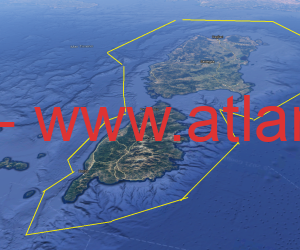
The texts of Timaeus and Critias contradicted the biblical chronology! An amanuensis writer who had translated these two passages would have asked his superior: “The Bible says that the world originated around 4000 BC: how is it possible that the Sardo-Corsican island dates back to 9600 BC?”. Faced with a dilemma of a moral nature that contradicted the Catholic Church, more or less as happened with Giordano Bruno and Galileo Galilei, and the publication of Descartes’ “Mondo”, probably the only acceptable solution was to tear away the conclusive text, so that the date 9600 disappeared from known texts. The Romans, for their part, to contrast the name of the sea with Mare Atlanticum, called it Mare Nostrum: it is no longer from Atlantis, it is a Mare Nostro, from us Romans. I would be pleased if now, recovered from the shock, the archaeologists and perhaps also the geologist Luigi Sanciu, With this message I want to underline my profound esteem for all the scholars, archaeologists, geologists, researchers, journalists such as Sergio Frau and Graham Hancock, who have contributed to the worldwide search for truth. You all have my praise and my respect. Thank you for the work you have done and still do. World scientific research can only progress if every single citizen can give his contribution, even when he says nonsense: because a mistake in research doesn’t kill anyone, as long as the research then continues. And the important thing is that we stop tearing each other apart between scientists and researchers: our aim can be the serene search for truth, with serene dialogue. It is not serious if a citizen mistranslates the original Greek text. “We mustn’t hit him for this”: let’s try to focus on dialogue, discussion, and let’s stop waging war between factions of thought. “I don’t agree with what you say but I would give my life for you to say it” (phrase not by Voltaire, but by Evelyn Beatrice Hall). I await the response of the researchers to my statements on the currently semi-submerged Sardinian Corsican Atlantis.
If you really want to understand Atlantis: study the geology of the submerged Corsican Sardinian block. Studying the Sardinian dwarf elephants found in Sardinia, called Mammuthus Lamarmorae. When Plato writes that “the species of elephants was present” he is talking about this animal, not the Indian elephants. To understand Atlantis it is necessary to know the toponymy of Sulcis: “Poseidon put two springs there, one of cold water and one of hot water”. In fact, the Corsican Atlantean Sardinians called the towns of Sulcis with the following names: Acquafredda (which disappeared in the Middle Ages, but a Castle of Acquafredda remained in Siliqua), Acquacadda, S’acqua callenti de Susu, S’acqua callenti de Baxiu, Piscinas (perhaps following the submersion of the Sardinian-Corsican geological block), the source of Zinnigas still exists, Upper Is Sais and Lower Is Sais (which probably gave their name to the city of Sais in Egypt where they told Solon of Atlantis). The Atlantean DNA has already been found and studied by Professor Carlo Lugliè, who has already SCIENTIFICALLY established that this population has a different DNA from that of the Neolithic people who populated Sardinia 3000 three thousand years later. Certain! If there was a catastrophe with the sinking of the Corsican Sardinian geological block, it is obvious that they died and a population with different DNA came later. In Sulcis Poseidon obviously loved caves. There were the caves of IS Zuddas and Acquacadda (here the theme of hot and cold water returns and therefore of the sources). But when he moved north, he probably went to the caves of Alghero, which the Romans still knew as Neptune’s Caves. But Neptune is the Latin name of Poseidon! So the caves of Neptune are the transfer location of this ancient ruler when he went to the north, probably to visit his sons. Until today, Poseidon / Neptune was thought to be a myth / legend, but he was a very ancient ruler, later deified. This fact is called “EVEMERISM”. I suggest to all readers that you take a look, to learn new things. If what I say is true, can I prove it somehow? If a person is intelligent he can deduce it in the following way. The Mammuthus Lamarmorae have so far been found in at least 3 locations: Funtanammari in Gonnesa, in Alghero where there is Neptune’s cave, and if I am not mistaken in the Sinis. In Alghero we have just said that there are the Grottoes of Neptune, therefore Poseidon used to go there, and they found the dwarf Sardinian mammoth. If you analyze the toponymy of Gonnesa, they found another dwarf mammoth of the elephant species in Funtanamari, which means “Fountain by the sea”. But the fountain is a source of water! Here is the theme of the island rich in water sources. Now, the Egyptian priest told Solon, around 590 BC, a lot of things, but archaeologists can’t go so far as to claim that the priest also taught him the Sardinian-Corsican language and the various Atlantean dialects. All those that I list are not coincidences: Atlantis is really the Sardinian Corsican block currently half-submerged. Probably scholars, now, pretending to believe the things I say, will gradually begin to realize that I am right and that I am not lying. they found another dwarf mammoth of the elephant species in Funtanamari, which means “Fountain by the sea”. But the fountain is a source of water! Here is the theme of the island rich in water sources. Now, the Egyptian priest told Solon, around 590 BC, a lot of things, but archaeologists can’t go so far as to claim that the priest also taught him the Sardinian-Corsican language and the various Atlantean dialects. All those that I list are not coincidences: Atlantis is really the Sardinian Corsican block currently half-submerged. Probably scholars, now, pretending to believe the things I say, will gradually begin to realize that I am right and that I am not lying. they found another dwarf mammoth of the elephant species in Funtanamari, which means “Fountain by the sea”. But the fountain is a source of water! Here is the theme of the island rich in water sources. Now, the Egyptian priest told Solon, around 590 BC, a lot of things, but archaeologists can’t go so far as to claim that the priest also taught him the Sardinian-Corsican language and the various Atlantean dialects. All those that I list are not coincidences: Atlantis is really the Sardinian Corsican block currently half-submerged. Probably scholars, now, pretending to believe the things I say, will gradually begin to realize that I am right and that I am not lying. Here is the theme of the island rich in water sources. Now, the Egyptian priest told Solon, around 590 BC, a lot of things, but archaeologists can’t go so far as to claim that the priest also taught him the Sardinian-Corsican language and the various Atlantean dialects. All those that I list are not coincidences: Atlantis is really the Sardinian Corsican block currently half-submerged. Probably scholars, now, pretending to believe the things I say, will gradually begin to realize that I am right and that I am not lying. Here is the theme of the island rich in water sources. Now, the Egyptian priest told Solon, around 590 BC, a lot of things, but archaeologists can’t go so far as to claim that the priest also taught him the Sardinian-Corsican language and the various Atlantean dialects. All those that I list are not coincidences: Atlantis is really the Sardinian Corsican block currently half-submerged. Probably scholars, now, pretending to believe the things I say, will gradually begin to realize that I am right and that I am not lying. Atlantis is indeed the currently half-submerged Corsican Sardinian block. Probably scholars, now, pretending to believe the things I say, will gradually begin to realize that I am right and that I am not lying. Atlantis is indeed the currently half-submerged Corsican Sardinian block. Probably scholars, now, pretending to believe the things I say, will gradually begin to realize that I am right and that I am not lying.
If Atlantis is really the semi-submerged Sardinian-Corsican block, then some parts of prehistory and history will have to be rewritten from scratch. I leave this work to you. I’m not capable of it. For me it has already been a superhuman effort to be able to put order in the midst of all this mess. I don’t care about fame. In my opinion, Professor Ugas came close when speaking of the Atlantic coast of Africa, but in my opinion, to better understand it, he could re-examine Marco Ciardi’s text, when he speaks of Bailly (Ciardi M., Atlantis A scientific controversy from Colombo to Darwin, Carocci editore, Rome, 1st edition, November 2002, p.92-97): in practice a part of the Atlantean colony colonized the area indicated by Prof. Ugas, while Poseidon became the ruler of the now submerged Sardo-Corsican island. Attention! It is important to note that the currently submerged Sardinian-Corsican continental shelf is immense in size! That was an integral part of the island. 11,000 years of erosion by sea currents generated the mud that surrounded the island in the Platonic story, and this mud, settling, cleaned the waters of present-day Sardinia making them crystal clear. Furthermore, there is a very small desert in Sulcis. This desert is most likely artificial. Further studies will be needed to prove it, now I am unable to provide you with any other evidence. he cleaned the waters of what is now Sardinia making them crystalline. Furthermore, there is a very small desert in Sulcis. This desert is most likely artificial. Further studies will be needed to prove it, now I am unable to provide you with any other evidence. he cleaned the waters of what is now Sardinia making them crystalline. Furthermore, there is a very small desert in Sulcis. This desert is most likely artificial. Further studies will be needed to prove it, now I am unable to provide you with any other evidence.
I hope these posts of mine are interesting. If not, delete everything and leave it alone. I hope that out of hundreds of people, there are at least one or two who understand the importance of what I am doing.
I apologize if I have moments of anger: I am furious at the fact that the scientific world continues to insist on telling lies to listeners. It is not right that scientists and scholars spread lies. It’s unfair. It is unfair that a Sardinian/Corsica bathymetry expert has not been called. It is unfair that Prof. Carlo Lugliè was not called to question him on the truthfulness of what I said. It is unfair that no one EVEN NAMED the elephant species Mammuthus Lamarmorae. If you’ve never seen it, go to the Iglesias museum. But next time please talk about it.
For me it is a moral duty to make this information public.
For at least 2600 years no one has understood that the Timaeus is not only a text of astronomy, but also of geology, given that it deals with the geological sinking of the Sardinian Corsican Atlantean block.
For archaeologists : a paradigm shift is taking place , as explained in the book by Thomas Kuhn, The structure of scientific revolutions, how ideas of science change, Einaudi, Turin, 1969: I called it ” The Sardinian Corsican Atlantean paradigm”. Before, everyone believed that orbits were circular, following Aristotle as You follow Lilliu (in the style of “Ipse Dixit”, “Lilliu dixit”). Then they realized, after an infinite number of tests after tests, that the orbits are elliptical. Then another paradigm shift occurred: the Bible said that the earth was at the center of the Universe, and Copernicus said that the Sun was in the focus of its elliptical orbit. Galileo confirmed this, and they showed him the instruments of torture, which I hope you will not show me. But Bruno was burned alive, poor fellow. Now I ask you: give me the benefit of the doubt and cross-check my claims, please. It may take a long time, but you will understand that we are once again facing something extraordinary: a new paradigm shift. The island of Atlantis is the Egyptian name for the currently semi-submerged Sardinian-Corsican geological block, whose two plateaus emerging out of the water are now known by the names of Sardinia and Corsica. Prof. Carlo Lugliè can help you by explaining that the original Atlantean population, around 11,000 years ago, had a different DNA from the Neolithic people who populated it 3,000 years after the catastrophe, and lived above all by procuring marine resources, and for this reason, the Atlantean settlements they were located mainly on the coasts. It is for this reason that civilization has been almost totally wiped out: because they lived on the coasts and these were submerged “in the short span of a day and a night of terrible earthquakes and floods”. Today science calls the Atlantean paleocoasts with the name of “Sardinian-Corsican continental shelf”. Furthermore, there have been 11,000 years of sea currents eroding and destroying coastal structures. Perhaps it is impossible to still find the remains of this civilization. Furthermore, the Andreotti Government has allowed the United States to set up a nuclear submarine base at La Maddalena, so the Americans had at least half a century to make their raids with submarines in our waters, before the Superintendencies woke up and understood what was happening. And since the Americans are clever, they have set up a “military base” right in Teulada, in Sulcis. But look, what a coincidence… Fantarcheology? Dear Superintendencies, where are your submarines for coastal exploration? Where are your thousands of reports on the Sardinian seabed? Where are the 3D bathymetries of the seabed? Or maybe nobody made them? And where are the letters to the Ministers, asking to obtain these things? To obtain funding by explaining its immense importance for the history of human civilization? If Corsican Sardinian Atlantis sank around 9600 BC, why are you wasting your breath and energy looking for Atlantis in the Nuragic layers? Once the existence of Atlantis with Sulcis as its capital is taken for granted, one has a precise idea of where to look for the structures described by Plato. to ask to get these things? To obtain funding by explaining its immense importance for the history of human civilization? If Corsican Sardinian Atlantis sank around 9600 BC, why are you wasting your breath and energy looking for Atlantis in the Nuragic layers? Once the existence of Atlantis with Sulcis as its capital is taken for granted, one has a precise idea of where to look for the structures described by Plato. to ask to get these things? To obtain funding by explaining its immense importance for the history of human civilization? If Corsican Sardinian Atlantis sank around 9600 BC, why are you wasting your breath and energy looking for Atlantis in the Nuragic layers? Once the existence of Atlantis with Sulcis as its capital is taken for granted, one has a precise idea of where to look for the structures described by Plato. https://www.atlantisfound.it/wp-content/uploads/2023/02/Capitale-di-Atlantide-Luigi-Usai-17-febbraio-2023-pulita.png Prof. Ugas can confirm that the dimensions coincide perfectly with what Plato said, also the distance of the capital from the sea, about 8.8 kilometers. Perhaps the problem is that the structures could also be 100 meters underground, because at first glance it seems that they have been submerged by mountains of earth (this needs to be verified, but it is understandable to the eye). Salvatore Dedola is a genius: he noticed the incredible overlap between Sardinian and Babylonian, Sumerian and Akkadian names. “There was a Paleo-Neolithic linguistic coenosis”. It is all right! The linguistic coenosis was caused by the Atlantean people of the Sardinian coast, i.e. the same inhabitants whose DNA has already been analyzed in two individuals out of three of the rock shelter of Su Carroppu. The Sardo-Corsican Atlanteans migrated to the Mediterranean. And these migrations would explain the Cretan civilization which worshiped the bull, which had the Labrys, it would explain the highly evolved culture and the engraving of Poseidon’s trident found on the Palace of Knossos; and it would explain why the Sardinian ingots are found in Crete, in Cyprus, and why there is Akrotiri in Cyprus and there is a second Akrotiri in Santorini, where an evolved civilization lived that even had toilets and pipes… It would explain why on Mount Carmel they then found structures from the Nuragic era. It would explain why Atlit-Yam, Pavlopetri, Herakleion/Thonis, Baia and who knows how many others that you haven’t even found yet… And it would also explain why Atlit-Yam had that name, since perhaps Atlantis was the mother island from which they had migrated…Since Atlantis had laws (the orichalcum column engraved with the laws, on the top of which they poured bull’s blood? Sound familiar?), is it not surprising that the descendants then created the Code of Hammurabi, strengthened by the legal knowledge developed in the previous millennia on the Sardinian-Corsican-Atlantean geological block. Give me the benefit of the doubt for just a moment. The Romans sought the Damnatio Memoriae for Atlantis. They subdued them, perhaps stripped the Neptune Caves of the little material that perhaps still remained, but they continued to call them by their name. In short, they knew Poseidon/Neptune, for them he was still a historical character. At this point it wouldn’t surprise me if names related to Atlantis had been banned, and maybe Atlas has become Antas, which could clarify the toponym S’Antadi. I haven’t been able to research this and I’m absolutely not capable of it. and S’Antadi also appears in Sant’Antonio di Santadi (but look what an incredible coincidence? The Americans have set up a military base here too… but what a strange coincidence… and then in Perdas de Fogu there is another military base, just where they stole the DNA of the inhabitants… what a strange coincidence… but of course I’m imaginative, huh? How about?) At the military base of the La Maddalena submarines, the Americans brought, hear hear… moles to create tunnels among the largest in the world then existing. Why? Why were the Americans interested in digging huge tunnels in and around La Maddalena? What were they looking for underground? Had they seen any kind of metal via satellite (can be done)? I understand if they carry a missile, if they carry other materials useful for military purposes, but what about moles to dig tunnels? Perhaps it may be interesting to analyze where military bases are located to extract other useful information. Nuclear submarines for the Mediterranean? Just halfway between Sardinia and Corsica? There were incidents, and the newspapers once reported that the submarine was right in Teulada. I hope there is at least something clever in what I wrote. Maybe it’s all a coincidence. Maybe I dreamed it all up. Sed iam, nox damp caelo praecipitat suadentque cadentia sidera somnos, so hello.
Sincerely, v. 119
If the Sardinian Corsican-Atlantean paradigm is correct, it means that all the books of the planet’s history and archeology are incomplete. Furthermore, the urban planning books must be changed, because Sulcis would become, according to my statements, the first city known in the world, with peculiar characteristics: built starting from a sacred circular groove; made in concentric circles, as was later done with the Temple of the Sun in Nineveh, with the Port of Carthage, with the city of Troy, with Villa Adriana in Rome, and who knows how many other structures: who had ever noticed? Sometimes maybe we look but we are unable to really see.

The books on navigation must be changed, because they are incomplete and imprecise; architectural books need to be modified to integrate them with new features; the books on aesthetics must be modified, because the Sardinian Corsican Atlantean aesthetics was the first currently known throughout the Mediterranean and Aegean etc …; the philosophy texts must be changed, as Plato spoke as a historian and told the truth, as he was with all the other texts by him. All the texts on ancient statuary must be modified, because now we have Sardinian bronzes and the statuary of Mont’e Prama; if my theory is correct it means that the Sardinian Corsican Atlanteans invented hydraulic engineering, creating systems of canals, and then they also taught it to the Mesopotamians, who modified the course of the Tigris and Euphrates rivers.
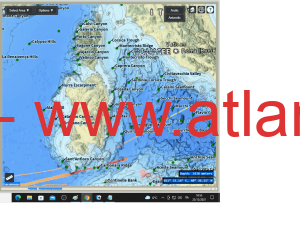
If the Sardinian Corsican paradigm is correct, the geography books, the encyclopedias, the books dealing with ancient trade are wrong … all antiquity would have to be rewritten and all the books would be inaccurate, wrong or to be integrated. It’s a great result, I have to admit. And I want to remove the doubt: I am very sure that everything is right, just as Einstein was very sure that relativity was correct, before it was experimentally confirmed, and I want to know this, to avoid misunderstandings. “The genius sees the answer before the question” (taken from a film). If I am right, we will have to rewrite the books on mineralogy, petrology, the books on building materials; and even worse, we may find that the Pyramids were made with Sardinian Corsican labor, which would be incredible. All of this would change the way we understand the whole world.

In short, if the Sardinian Corsican Atlantean paradigm proposed by me turns out to be correct, it will mean that I will have changed and upset, but also put back in order, our whole vision of the world from prehistoric times to today.
How can you deny my thesis: it is very simple, just double-check the development of the Megalithic civilization and at the same time ask for help from Paleoanthropologists: these are able, even through genetics, to prove whether I am telling the truth or lying.
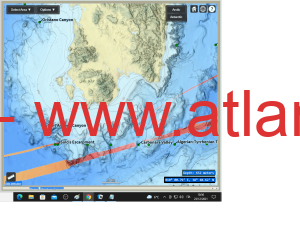
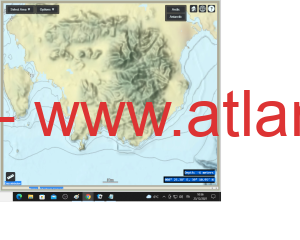
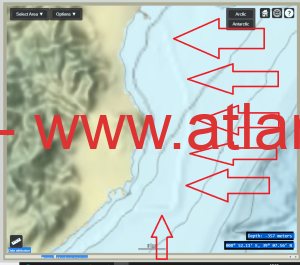
But I already know the answer, because these days I have been studying Paleoanthropology. They too came to the same conclusion, but they couldn’t understand how it was possible. It is obvious that they cannot understand it, as the history books do not even mention the Sardinian Corsican peoples. Yet the Latin dictionaries clearly state that Troy had Ilio as a second name, and that it was founded by the Ilienses. It was enough to understand that the Ilienses who founded Troy are the same Ilienses of the Sardinian Corsican block. It was a logical step anyone could have taken.
Too bad that even Aristotle had not believed in his own teacher. Can you imagine? A student who does not believe his teacher who taught him almost everything. I’d like to punch Aristotle in the face if I could. It’s a crime? 😀 hehehe
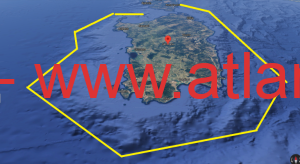
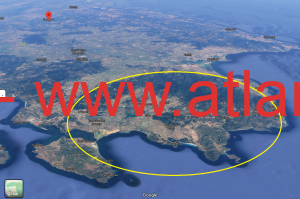
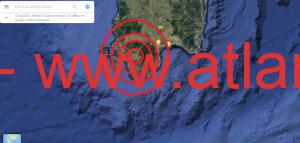
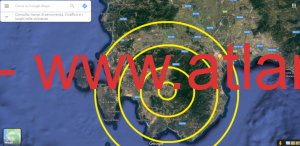
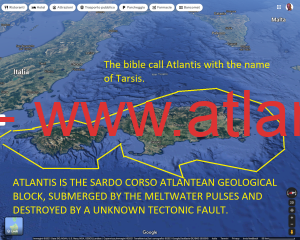
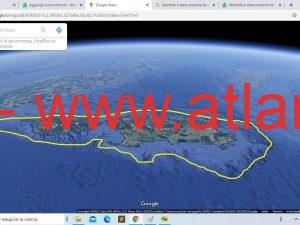
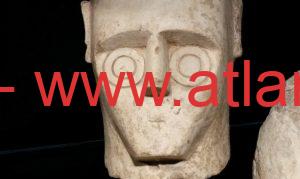
I have also made many other discoveries, but for now I will not make them public, I will publish them as books. First I want to see if the world is able to understand my first theses, which are so shocking that there are people who prefer to attack me to defend the status quo, rather than arguing as civilized people to show me where I am wrong in my statements.
